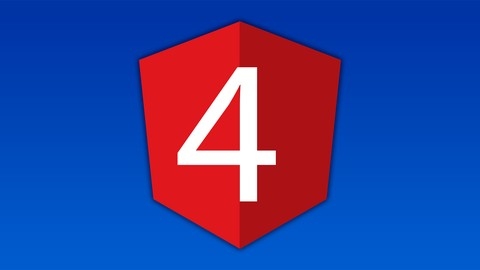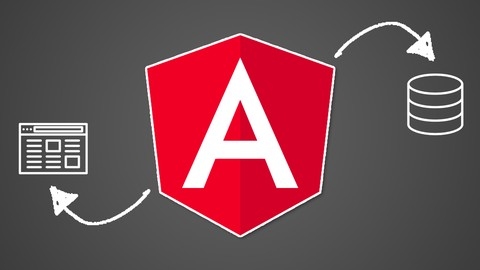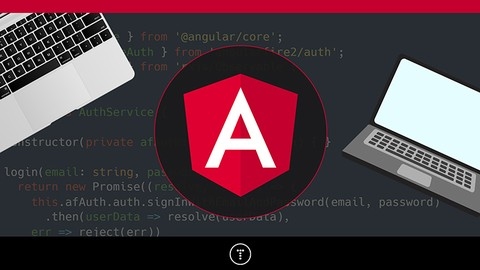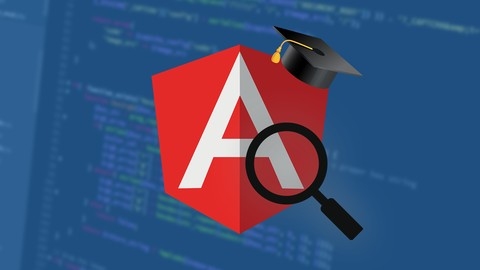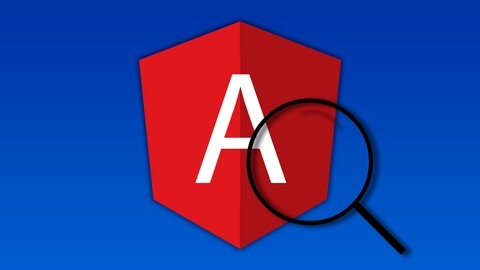Angular is a powerful JavaScript framework for building dynamic web applications.
It offers a robust structure, efficient data binding, and a component-based architecture that promotes code reusability and maintainability.
By learning Angular, you can create high-performance, scalable web apps that deliver a smooth user experience.
Finding the right Angular course on Udemy can be a daunting task, with so many options available.
You’re looking for a comprehensive program that teaches you the fundamentals, guides you through practical projects, and prepares you for real-world development.
For the best Angular course overall on Udemy, we recommend "Angular - The Complete Guide (2024 Edition)" by Maximilian Schwarzmüller.
This course is highly regarded for its thorough coverage, engaging teaching style, and hands-on approach.
It starts with the basics and progresses to advanced topics like routing, forms, and data management, providing you with a solid foundation in Angular development.
While this is our top pick, there are other excellent Angular courses available on Udemy.
Keep reading to explore our comprehensive list of recommendations, tailored to different learning styles and goals.
Whether you’re a beginner looking for a gentle introduction or an experienced developer seeking advanced techniques, we have the perfect course for you.
Quick Picks
| Course Name | Skills Acquired | Enroll Now |
|---|---|---|
| Angular - The Complete Guide (2024 Edition) | • Components, Templates, Directives • Data Binding, Routing, Forms • HTTP, Modules, Lazy Loading |
👉 Go To Course |
| The Complete Angular Course: Beginner to Advanced | • TypeScript, Angular Fundamentals • Components, Directives, Services • HTTP, Routing, Authentication |
👉 Go To Course |
| Angular & NodeJS - The MEAN Stack Guide [2024 Edition] | • MEAN Stack Fundamentals • Angular Frontend Development • Node.js, Express, MongoDB |
👉 Go To Course |
| Angular Crash Course for Busy Developers | • Angular Basics, TypeScript • Components, Directives, Forms • HTTP, Routing |
👉 Go To Course |
| Full Stack: Angular and Java Spring Boot E-Commerce Website | • Angular Frontend, Spring Boot Backend • E-commerce Functionality • Authentication, Payment Integration |
👉 Go To Course |
| Angular (Full App) with Angular Material, Angularfire & NgRx | • Angular, Angular Material • Firebase, Angularfire • NgRx State Management |
👉 Go To Course |
| Angular Front To Back | • Angular CLI, TypeScript • Components, Data Binding, Routing • Firebase Integration, Deployment |
👉 Go To Course |
| Angular Core Deep Dive - Beginner to Advanced (Angular 17) | • Angular Fundamentals, Components, Directives • Dependency Injection, Change Detection • Internationalization, Signals API |
👉 Go To Course |
| Testing Angular 4 (previously Angular 2) Apps with Jasmine | • Automated Testing, Unit Testing • Integration Testing • Asynchronous Operations, Shallow Component Tests |
👉 Go To Course |
| Reactive Angular Course (with RxJs, Angular 17) | • RxJs, Reactive Programming • Stateless Observable Services • State Management, Authentication |
👉 Go To Course |
Angular - The Complete Guide (2024 Edition)
This course starts by introducing you to the basics of Angular, including components, templates, directives, and data binding.
You’ll learn how to create and use components, which are the building blocks of Angular applications.
The course covers different types of data binding, such as string interpolation, property binding, event binding, and two-way data binding.
As you progress, you’ll dive deeper into components and learn about component lifecycle hooks, view encapsulation, and content projection.
The course also covers advanced topics like dependency injection, services, and how to use them for cross-component communication.
One of the key features of Angular is its routing system, which allows you to create single-page applications with multiple views.
The course dedicates a section to routing, where you’ll learn how to set up routes, navigate between them, pass parameters, and protect routes with guards.
The course also covers forms, which are essential for building user interfaces.
You’ll learn about template-driven and reactive forms, form validation, and how to handle form data.
Additionally, you’ll explore pipes, which are used to transform data before displaying it in the view.
To build real-world applications, you’ll need to communicate with servers and APIs.
The course covers making HTTP requests, handling responses, and using RxJS operators to transform data.
You’ll also learn about authentication and route protection, ensuring that only authorized users can access certain parts of your application.
As your application grows, you’ll need to organize your code and optimize performance.
The course covers Angular modules, lazy loading, and how to deploy your application.
You’ll also learn about advanced topics like dynamic components, standalone components, and Angular Signals, a new way of managing data and change detection.
The course includes a project where you’ll apply the concepts you’ve learned to build a complete application.
You’ll also learn about testing, animations, and adding offline capabilities with service workers.
The Complete Angular Course: Beginner to Advanced
The course starts with an introduction to Angular, its architecture, and setting up the development environment.
You’ll learn about the structure of Angular projects, Webpack, and the version history of Angular.
This section lays the foundation for the rest of the course.
Next, you’ll dive into TypeScript, which is a superset of JavaScript and the primary language used in Angular development.
You’ll learn about variables, types, interfaces, classes, objects, modules, and more.
This section is crucial for understanding the syntax and concepts used throughout the course.
Once you have a solid grasp of TypeScript, the course moves on to Angular fundamentals.
You’ll learn about the building blocks of Angular apps, such as components, templates, directives, services, and dependency injection.
This section covers essential concepts that you’ll use extensively in your Angular projects.
The course then delves into displaying data and handling events, covering topics like property binding, attribute binding, class binding, style binding, event binding, two-way binding, pipes, and custom pipes.
You’ll learn how to create dynamic and interactive user interfaces.
Building reusable components is a crucial aspect of Angular development, and the course dedicates a section to this topic.
You’ll learn about component APIs, input and output properties, templates, styles, view encapsulation, and more.
Directives are another important concept in Angular, and the course covers various built-in directives like ngIf, ngSwitch, ngFor, ngClass, and ngStyle.
You’ll also learn how to create custom directives.
Forms are a vital part of most web applications, and the course covers both template-driven and reactive forms in detail.
You’ll learn about form validation, handling form data, and creating custom validators.
Consuming HTTP services is essential for interacting with APIs, and the course covers this topic extensively.
You’ll learn how to make GET, POST, PUT, and DELETE requests, handle errors, and implement global error handling.
Routing and navigation are crucial for building single-page applications, and the course covers this topic in-depth.
You’ll learn about configuring routes, handling route parameters, query parameters, and programmatic navigation.
Authentication and authorization are essential for securing your Angular applications, and the course covers these topics using JSON Web Tokens (JWT).
You’ll learn how to implement login and logout functionality, protect routes based on user roles, and access protected API resources.
The course also covers deployment, including JIT vs AOT compilation, building applications with Angular CLI, environments, linting, and deploying to various platforms like GitHub Pages, Firebase, and Heroku.
Additionally, the course covers advanced topics like building real-time serverless apps with Firebase, animations, Angular Material, and Redux.
These sections will help you take your Angular skills to the next level.
The course includes a comprehensive project where you’ll build a complete e-commerce application, applying the concepts you’ve learned throughout the course.
This project covers authentication, product management, product catalog, shopping cart, checkout, and modularization.
Angular & NodeJS - The MEAN Stack Guide [2024 Edition]
You’ll start by understanding the fundamentals of the MEAN stack and how its components work together.
The course covers setting up your development environment, including installing Node.js and the Angular CLI.
You’ll then dive into building the Angular frontend, learning about components, data binding, forms, and more.
Next, you’ll integrate Node.js and Express to create a backend API, handling HTTP requests and responses.
The course covers connecting your Angular frontend to this API, as well as implementing MongoDB as the database using Mongoose.
As you progress, you’ll add advanced features like authentication, authorization, image uploads, pagination, and error handling.
The course also covers optimizations, such as separating concerns with controllers and middleware, creating Angular modules, and lazy loading.
Finally, you’ll learn how to deploy your MEAN stack application to a live server, ensuring it’s accessible to users worldwide.
Throughout the course, you’ll work on a real-world project, applying the concepts you learn to build a fully-functional web application.
The instructor provides clear explanations, code examples, and practical exercises to reinforce your understanding.
Angular Crash Course for Busy Developers
You’ll start by getting your development environment set up and building your first Angular app.
This hands-on approach ensures you understand the basics like the architecture and project structure right from the get-go.
Since Angular heavily relies on TypeScript, you’ll spend a good chunk of time mastering its core concepts like types, interfaces, classes, and modules through coding exercises.
This solid TypeScript foundation will be invaluable as you progress.
Once comfortable with the building blocks, you’ll learn how to create components - the fundamental units of Angular apps.
You’ll bind data, handle events, use built-in directives like ngIf and ngFor, and even create custom directives.
The course dedicates separate sections to template-driven and reactive forms, covering validation, custom validators, nested form groups, and more.
If you’ve struggled with Angular forms before, these lectures will clarify the concepts.
A major part is dedicated to HTTP services - fetching data from APIs, handling errors gracefully, and implementing optimistic/pessimistic updates.
You’ll learn observable operators, global error handling, and build reusable data services.
Routing and navigation, though crucial, can be tricky.
This course demystifies it by explaining route configuration, route parameters, query params, and programmatic navigation in-depth using examples.
Throughout, you’ll build real-world components, leverage Angular CLI for scaffolding, and integrate popular libraries like Bootstrap.
The hands-on exercises and coding along reinforce what you learn.
Full Stack: Angular and Java Spring Boot E-Commerce Website
This course covers building a full-stack e-commerce application from scratch using Angular for the front-end and Spring Boot for the back-end.
It starts with crash courses on TypeScript and Angular fundamentals, ensuring you have a solid foundation.
You’ll learn how to set up development tools, create components, integrate Bootstrap CSS, and handle conditionals and formatting in Angular.
Moving on, you’ll dive into developing the Spring Boot back-end, covering JPA entities, REST APIs, and database integration.
The course guides you through building the Angular front-end, including features like product listing, searching, pagination, and shopping cart functionality.
As you progress, you’ll integrate an online shop template, add support for categories and keyword searches, and implement a master-detail view for products.
The course also covers crucial aspects like checkout form validation, saving orders to the database, and securing the application with authentication and authorization using Okta.
Additionally, you’ll learn how to handle browser refreshes, refactor the codebase, implement order history, secure communication with HTTPS, configure environments in Angular, and integrate credit card payment processing with Stripe.
The instructor provides clear explanations, coding examples, and hands-on exercises to reinforce the concepts.
You’ll have access to the source code and PDF files for reference.
Angular (Full App) with Angular Material, Angularfire & NgRx
The course starts by introducing you to Angular and setting up a new project using the Angular CLI.
You’ll learn core Angular concepts like components, templates, directives, services, routing, and forms through practical examples.
This lays a solid foundation before moving on to more advanced topics.
A major focus is integrating Angular Material, Google’s UI component library, into the app.
You’ll understand what Angular Material is, how to add it to your project, and work extensively with various components like buttons, navigation, forms, tables, dialogs, and more.
The course guides you in creating a good user experience by styling components and using layout techniques like Flexbox.
As you build the app, you’ll learn to work with data by implementing authentication, fetching data from a service, and allowing users to perform CRUD operations.
The course then dives into integrating Firebase and Angularfire to connect the Angular app to a real-time database and authentication system.
To optimize the app, you’ll split it into modules, lazy load routes, create shared modules, improve error handling, and add loading spinners/notifications.
Finally, you’ll learn to use NgRx, a state management library inspired by Redux, to manage your application state in a structured way.
The course covers deploying the final app to Firebase Hosting and has a bonus section on customizing Angular Material themes.
Angular Front To Back
You’ll start by setting up your development environment, including installing Node.js, Visual Studio Code, and Git Bash.
The course then guides you through using the Angular CLI to generate a new application and explores the file structure.
You’ll also get an introduction to TypeScript, a superset of JavaScript used in most Angular applications.
From there, the course dives into the core concepts of Angular, such as components, templates, and data binding.
You’ll learn how to create components, work with properties and methods, and display data in templates using techniques like string interpolation, ngFor loops, and ngIf conditionals.
The course also covers events, forms, validation, and two-way data binding with ngModel.
As you progress, you’ll explore more advanced topics like services, observables, and the HTTP module for making API calls.
The course guides you through building a logger application, implementing CRUD operations, and working with local storage.
The course dedicates a significant portion to routing, teaching you how to create routes, map them to components, and use route parameters.
You’ll also learn about route guards for controlling access.
Two major projects are included: a client panel application that integrates with Firebase’s Firestore database, and an advanced application that covers user authentication, registration, and settings management.
Throughout the course, you’ll work with Bootstrap for styling and learn techniques like property binding, class binding, and style binding to dynamically control the appearance of your components.
The course also covers pipes for formatting data and deploying your Angular applications to hosting platforms like Github Pages and Firebase Hosting.
Angular Core Deep Dive - Beginner to Advanced (Angular 17)
You’ll start with an introduction to Angular, learning about its key features and setting up your development environment.
The course then dives into the core building blocks of Angular applications, such as components, directives, and pipes.
You’ll learn how to create components, pass data between them using inputs and outputs, and control the rendering of elements with directives like ngIf and ngFor.
The course also delves into more advanced topics like local template querying, content projection, and view encapsulation, giving you a deep understanding of how Angular works under the hood.
You’ll explore Angular’s dependency injection system, change detection mechanisms, and lifecycle hooks, which are essential for building robust and efficient applications.
One of the standout features of this course is its coverage of Angular’s internationalization (i18n) capabilities.
You’ll learn how to create multilingual applications and handle pluralization, alternative expressions, and unique identifiers.
The syllabus also includes sections on Angular modules, custom pipes, elements, and the new standalone components feature introduced in Angular 17.
Additionally, you’ll dive into the cutting-edge features of Angular 17, such as the @defer syntax for partial template loading and the new Signals API, which provides a reactive programming model for Angular applications.
Throughout the course, you’ll work with practical examples and exercises, ensuring that you not only understand the concepts but also gain hands-on experience in applying them.
The instructor provides clear explanations and demonstrations, making it easy to follow along and grasp the material.
Testing Angular 4 (previously Angular 2) Apps with Jasmine
This comprehensive syllabus covers everything from the fundamentals of automated testing to advanced integration testing techniques.
You’ll start by diving into the world of unit testing Angular apps.
The course begins with an introduction to automated testing, explaining what it is and the different types of tests you’ll encounter.
From there, you’ll learn the basics of unit testing, including working with strings, arrays, forms, and event emitters.
You’ll also explore more advanced concepts like spies, interaction testing, and handling confirmation boxes.
But unit testing is just the beginning.
The syllabus also includes a dedicated chapter on integration testing, which is crucial for ensuring your Angular components work seamlessly together.
You’ll learn how to set up and generate the necessary code for integration tests, test property and class bindings, event bindings, and even navigate between routes.
The course also covers providing dependencies, stubs, and testing RouterOutlet components.
One of the standout features of this course is its focus on shallow component tests and testing attribute directives.
These techniques allow you to isolate and test specific parts of your application, making it easier to identify and fix issues.
Throughout the course, you’ll also learn how to deal with asynchronous operations, a common challenge in Angular development.
And to top it off, you’ll receive coupons for the instructor’s other courses, giving you even more opportunities to expand your Angular knowledge.
Reactive Angular Course (with RxJs, Angular 17)
You’ll start by reviewing a traditional imperative-style component and understanding its potential problems.
Then, you’ll dive into the stateless observable-based services design pattern, learning how to consume these services using the async pipe and avoid duplicate HTTP requests with shareReplay.
The course also explores reactive component interaction, teaching you how to decouple communication using shared services, custom observables, and behavior subjects.
You’ll implement loading and error handling services reactively, and even learn about local error handling in Angular Material dialogs.
As you progress, you’ll gain insights into Angular state management and build a store service step-by-step, including optimistic data modification operations.
The authentication state management section covers implementing an authentication store, adapting the UI based on user status, and supporting browser refreshes with local storage.
The master-detail UI pattern is a highlight, where you’ll build a complete implementation with built-in state management.
Additionally, the single data observable pattern is introduced, and you’ll refactor an application to use OnPush change detection.
The instructor’s clear explanations and step-by-step implementations make it easy to follow along and understand the concepts.
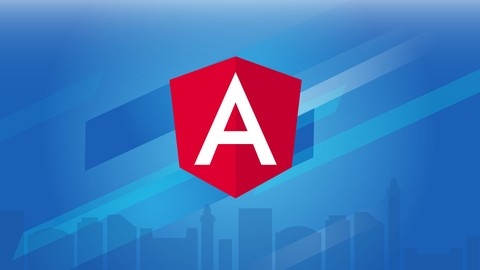

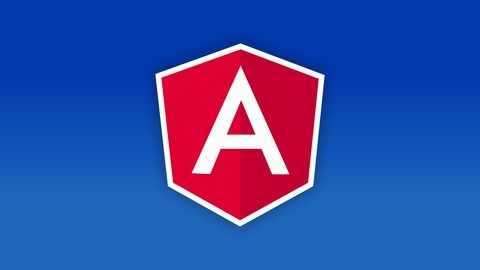
![Angular & NodeJS - The MEAN Stack Guide [2024 Edition]](/img/best-angular-courses-udemy/833442_AngularNodeJS-TheMEANStackGuide2024Edition.jpg)
